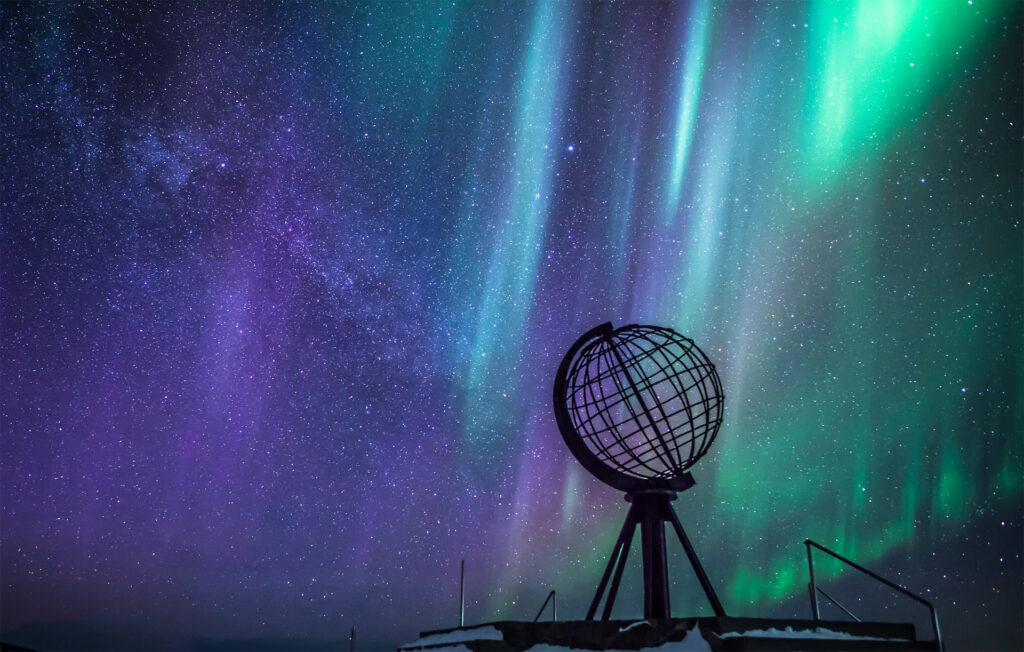Introduction
The Northern Lights, or Aurora Borealis, have mystified and mesmerized observers for centuries. In this extensive exploration, we’ll delve into the captivating question: What Causes the Northern Lights? Join us on a journey through the science, folklore, and wonders of this celestial phenomenon.

What Causes the Northern Lights?
The Solar Connection
The primary driver of the Northern Lights lies 93 million miles away—the Sun. Solar wind, a stream of charged particles ejected from the Sun, interacts with Earth’s magnetic field, creating stunning light displays near the polar regions.
Earth’s Magnetic Field
As the solar wind collides with Earth’s magnetic field, it funnels these charged particles towards the polar regions. Here, collisions with gases in the Earth’s atmosphere—primarily oxygen and nitrogen—produce the colorful lights we perceive as the Northern Lights.
Ionization and Emission
During these collisions, energy is transferred to the atmospheric gases, exciting their atoms and causing them to release photons. Different gases emit distinct colors when they return to their normal, non-excited state. Oxygen often produces green and red hues, while nitrogen contributes to purples, pinks, and blues.
Geomagnetic Storms
Enhancing the intensity of the Northern Lights are geomagnetic storms. These storms occur when disturbances in Earth’s magnetosphere amplify the interaction between solar wind and the magnetic field, leading to more spectacular displays.

The Cultural Significance of the Northern Lights
Folklore and Legends
Throughout history, diverse cultures have woven enchanting tales around the Northern Lights. In Norse mythology, the lights were considered the armor of the Valkyries, while indigenous peoples believed they were the spirits of ancestors dancing in the sky.
Scientific Exploration
Beyond folklore, scientific endeavors have unraveled the mysteries of the Northern Lights. Pioneering scientists like Kristian Birkeland and Carl Størmer made significant contributions to understanding the science behind these celestial wonders.

Chasing the Northern Lights: Best Places and Times
Optimal Viewing Locations
Tromsø, Norway
Nestled within the Arctic Circle, Tromsø provides a prime vantage point for Northern Lights enthusiasts.
Fairbanks, Alaska
Located beneath the Auroral Oval, Fairbanks offers frequent and intense Northern Lights displays.
Best Times to See the Northern Lights
Solar Maximum Years
The Sun follows an 11-year solar cycle, and solar maximum years, characterized by increased solar activity, offer the best chances for vibrant Northern Lights.
Winter Months
Long nights during the winter months, especially from September to April, provide extended opportunities for Northern Lights sightings.

Conclusion
The Northern Lights, with their celestial ballet of colors, are a testament to the interconnected dance of Earth and the Sun. From the scientific intricacies to the cultural significance, understanding What Causes the Northern Lights adds layers of appreciation to this natural wonder. Whether witnessed in the Arctic Circle or experienced through the lens of ancient myths, the Northern Lights continue to inspire awe and wonder.
Frequently Asked Questions
Q: What causes the Northern Lights?
A: The Northern Lights are caused by the interaction between solar wind, Earth’s magnetic field, and atmospheric gases.
Q: Can you see the Northern Lights outside the polar regions?
A: While the best displays are near the poles, during geomagnetic storms, Northern Lights can be visible at lower latitudes.
Q: Why do the Northern Lights change colors?
A: Different gases in Earth’s atmosphere emit distinct colors when excited. Oxygen often produces green and red hues, while nitrogen contributes to purples, pinks, and blues.
Q: When is the best time to see the Northern Lights?
A: The best times are during solar maximum years and the winter months from September to April.
Q: Do the Northern Lights have cultural significance?
A: Yes, various cultures have rich folklore surrounding the Northern Lights, often attributing them to the actions of mythical beings or spirits.





